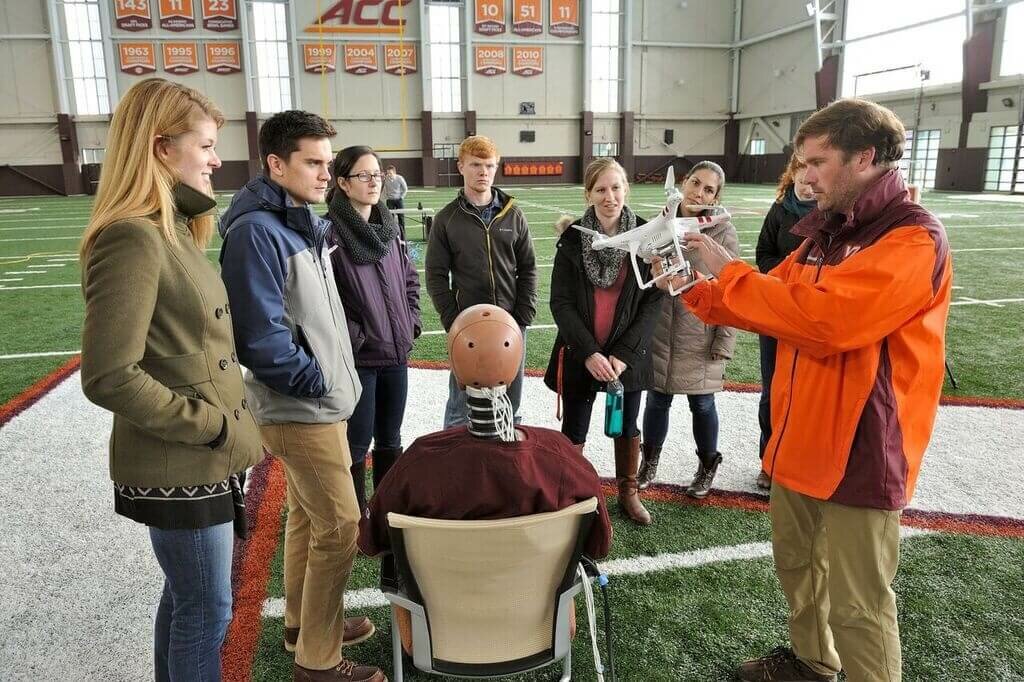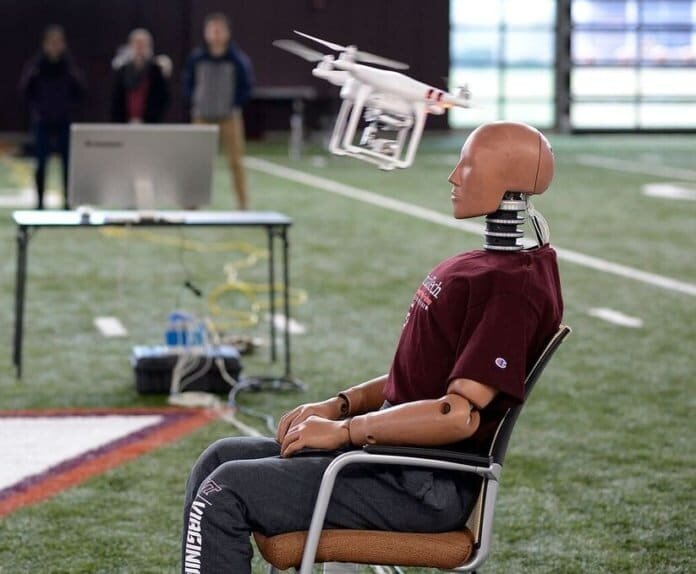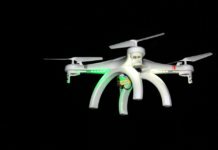At the beginning of this year, Virginia Tech, a longtime unmanned aircraft systems (UAS) researcher and home to one of the federal drone test sites, announced it would be using dummies to test the potential impact of drone crashes on humans.
Now, the university has revealed the results of the peer-reviewed academic study, which shows there is a wide variation in the risk UAS pose to people on the ground.
According to Virginia Tech, before drones can be flown regularly over humans, we need to understand what injuries the aircraft could potentially cause and what design features, operational limitations and regulations could help prevent them.
Thus, the university’s injury biomechanics group and UAS test site teamed up to conduct the study, offering quantitative data on injury risk associated with potential drone-human collisions.
The research, published in the Annals of Biomedical Engineering, assessed head and neck injury risk from three small, commercially available aircraft in a variety of scenarios. According to the university, it represents a critical step toward developing UAS safety standards that can minimize the risk of catastrophic or fatal injury from operations over people.
The injury biomechanics team is led by Steven Rowson, an assistant professor of biomedical engineering and mechanics in the College of Engineering, and Stefan Duma, the Harry Wyatt Professor of Engineering and interim director of the Institute for Critical Technology and Applied Science. The Virginia Tech Mid-Atlantic Aviation Partnership (MAAP), which runs the UAS test site, helped design and conduct the experiments.
The team used three drones with masses ranging from 1.2 kg (2.6 lbs.) to 11 kg (24.2 lbs.); the aircraft impacted a test dummy whose head and neck contained sensors to measure acceleration and force.
In one set of tests, the aircraft were flown into the dummy at full speed; in another, aircraft were dropped directly onto the dummy’s head in different orientations. The forces produced by these impacts were evaluated relative to standard benchmarks for forces likely to cause potentially severe or life-threatening injuries – e.g., skull fractures.
In general, the injury risk increased with aircraft mass. For example, in drop tests with the smallest drone, the risk of severe neck injury was less than 10%; for the largest aircraft, the median risk rose to 70%.
According to the university, these results suggest that a subset of small drones may already be safe to operate over people. Other aircraft, however, present significant injury risk, even those well within mass and speed limits outlined in the FAA’s Part 107 guidelines for commercial operations by small UAS.
The data also shows that despite greater impact speeds in the live flight tests, the drop tests – which facilitated more direct contact between the aircraft center of mass and the dummy’s head – tended to result in more severe hits. That reflects a common thread in the numbers: The nature of the impact had a significant influence on the resulting injury probability, says Virginia Tech.
“There’s a wide range of risk,” Rowson says. “In some instances, it was low, and in some instances, it was high, and there are lessons we can take away from that to reduce injury risk in a deliberate way through product design.”
During impacts in which the aircraft were deflected away from the body – by a protruding rotor arm, for example – the force and resulting injury risk were reduced. Aircraft features specifically designed to redirect the center of mass in the event of an impact could make severe injuries less likely, the study says.
Furthermore, the data showed that injury risk was also reduced when the aircraft deformed upon impact or when pieces broke off. Those deformations and fractures absorb some of the energy of the crash and offer another route for risk mitigation.

“If you reduce the energy that’s able to be transferred to be head, you reduce the injury risk,” says Eamon Campolettano, a doctoral student from Hicksville, N.Y., and the paper’s first author. “The overarching goal for manufacturers should be to limit energy transfer.”
The fact that some of the trials in the study yielded risk values greater than 50% highlights the potential for UAS-human impacts to lead to severe injuries, according to Virginia Tech. However, the significant variation in the data points to the need for comprehensive testing, especially considering the range of shapes, sizes and materials in the commercial UAS market.
“What happens when the arm strikes first or the center of mass?” asks Campolettano. “What we set out to do with this study was to explore some of the many different ways drones and people can interact and then use that baseline to choose different impact orientations for future studies.”
The team is using these initial results to guide the development of a broader set of controlled experiments in a laboratory environment; these will represent a necessary foundation for future regulations on UAS operations over people, says Virginia Tech.
“There’s a tremendous demand for more research in this area,” notes Mark Blanks, director of MAAP. “The first step was to establish a baseline for how to perform these tests. Now we’re doing a lot of work with individual companies, looking at specific airframes and potential mitigations.
“The big question right now is, what is the acceptable level of safety?” he continues. “How much proof does the FAA need before they say, ‘Yes, that’s okay’? Once those standards are in place, we’re going to see huge expansion in the industry.”











Leave a Comment
Your email address will not be published. Required fields are marked *